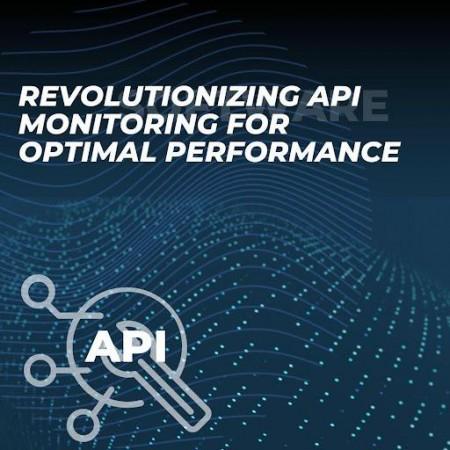
In today's digital era, API performance monitoring has become indispensable in enhancing service efficiency. With businesses increasingly relying on distributed systems, maintaining optimal API performance is critical for ensuring seamless user experiences and backend processes. Nikhil Bharadwaj Ramashastri, an expert in the field, discusses the cutting-edge innovations in API monitoring that are transforming service efficiency and user satisfaction. His research delves into various aspects of monitoring, automated alerts, and how they can proactively resolve bottlenecks before they affect end-users.
The Growing Need for Efficient API Monitoring
Application Programming Interfaces (APIs) are the backbone of modern software architectures, facilitating communication between different services and applications. The rise of cloud-native applications and the exponential growth of IoT have added immense pressure on APIs to handle large-scale data traffic and perform under varying conditions. This underscores the importance of real-time API monitoring to ensure that these critical components maintain performance levels that meet service-level agreements (SLAs). By leveraging automated alerts, organizations can identify and resolve potential issues before they escalate, preventing significant operational disruptions.
Key Metrics in API Performance Monitoring
API performance can be tracked through various metrics, two of the most significant being hit rates and load details. Monitoring hit rates allows teams to assess how frequently API endpoints are accessed, providing valuable insights into traffic patterns and usage trends. This data-driven approach helps developers optimize high-traffic services, ensuring they run efficiently without compromising user experience.
Load details, on the other hand, provide an in-depth look at an API's response times, throughput, and error rates. By monitoring these metrics, organizations can detect performance bottlenecks and understand how their systems manage varying loads. This proactive monitoring enables timely interventions, ensuring that users experience minimal disruptions.
Implementing Automated Alerts for Real-Time Issue Resolution
Automated alerts play a crucial role in modern API monitoring strategies, enabling teams to respond to potential issues in real-time. By setting predefined thresholds and metrics, such as response times and error rates, alerts can be triggered when anomalies occur. This system reduces the time it takes to identify and address problems, minimizing downtime and improving overall system reliability.
The ability to configure alerts based on the specific needs of an organization is a game changer. For instance, an alert might be set when an API's response time exceeds 100 milliseconds or when error rates rise above 1%. This precision ensures that only critical issues trigger notifications, preventing teams from becoming overwhelmed by false alarms. Moreover, the use of advanced monitoring tools such as Prometheus or New Relic allows for these alerts to be delivered across multiple channels, including email, SMS, and messaging apps.
Service-Level Monitoring and Its Impact on Efficiency
Service-level monitoring takes API performance tracking to the next level by focusing on the granular details of individual services. This approach involves capturing detailed performance metrics at the microservice level, allowing teams to pinpoint the exact source of performance issues. Through query analysis and service decomposition, teams can optimize their services more effectively.
By analyzing slow database queries and underperforming microservices, developers can focus their efforts on the components that have the most significant impact on performance. This targeted approach not only improves system efficiency but also reduces the Mean Time To Resolution (MTTR), enhancing the overall reliability of the application.
Real-Time Notifications for Immediate Action
Real-time notifications are a vital aspect of an effective API monitoring strategy. When an issue arises, immediate notifications allow development teams to react swiftly, preventing prolonged service disruptions. These notifications provide crucial details about the problem, including affected services, error logs, and trend data, enabling faster troubleshooting and resolution.
Integrating alerting systems with incident management platforms further streamlines the response process. This integration ensures that all issues are documented and tracked, providing a clear audit trail for future reference. Additionally, continuous refinement of alert thresholds based on historical data helps minimize false positives and ensures that alerts remain relevant as business requirements evolve.
The Benefits of API Performance Monitoring
Organizations that implement robust API performance monitoring and automated alerts experience numerous benefits. These include improved operational efficiency, enhanced user satisfaction, and optimized resource allocation. Monitoring tools help businesses comply with SLAs, mitigate potential security risks, and ensure the high availability of their services.
In industries such as e-commerce and financial services, API performance directly impacts revenue and customer trust. Automated alerts can help these businesses address performance issues before they lead to lost transactions or breaches in data security. This proactive approach ultimately leads to increased customer satisfaction and a stronger competitive position in the market.
In conclusion, Nikhil Bharadwaj Ramashastri's exploration of API monitoring innovations reveals that automated alerts and real-time notifications have become critical tools in maintaining high service efficiency. By continuously refining monitoring techniques, businesses can ensure optimal API performance, reducing downtime, and enhancing the overall user experience. The integration of advanced monitoring systems is no longer a luxury but a necessity in today's fast-paced digital landscape.

















